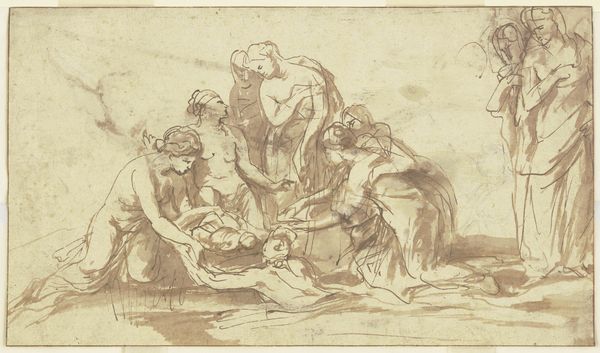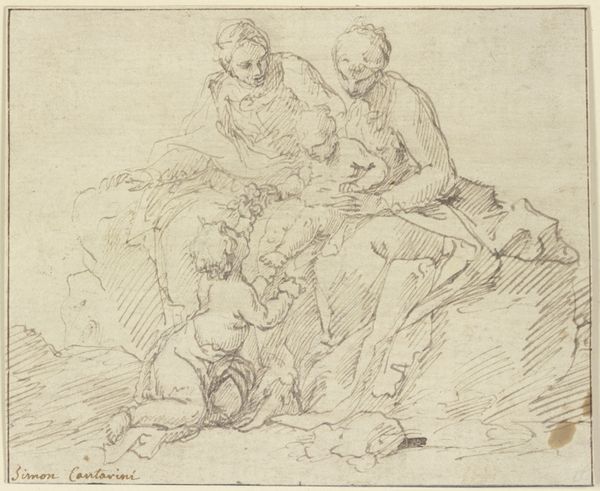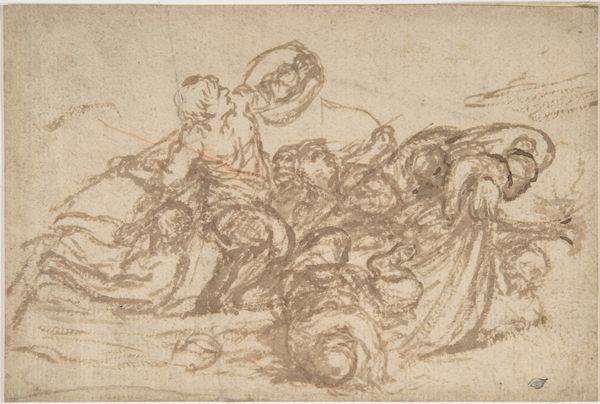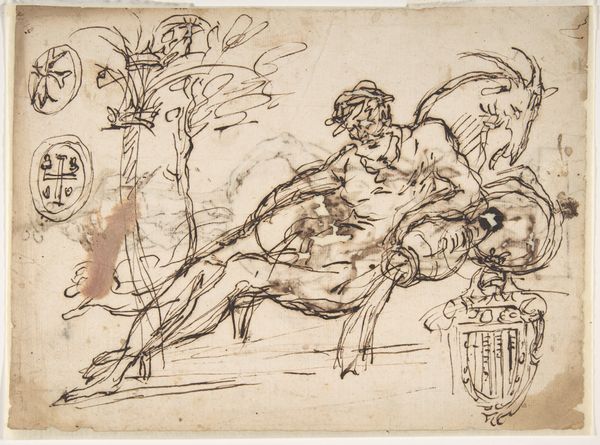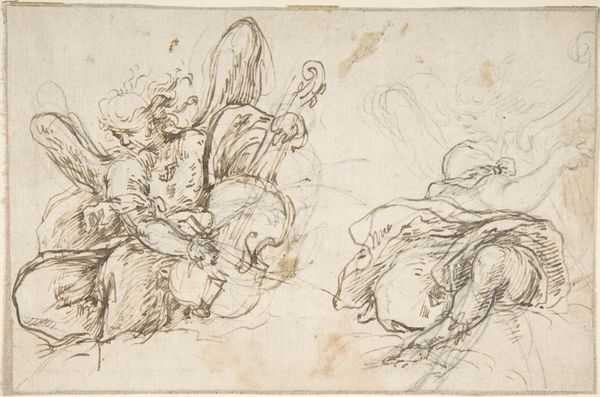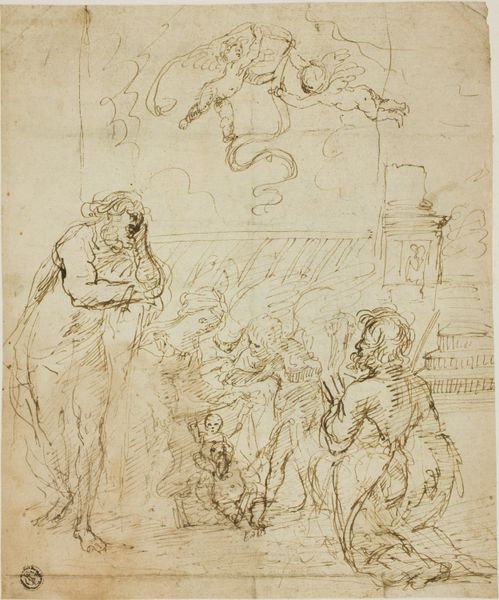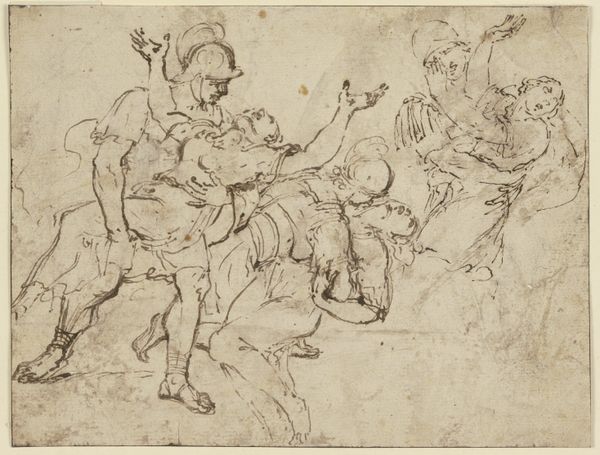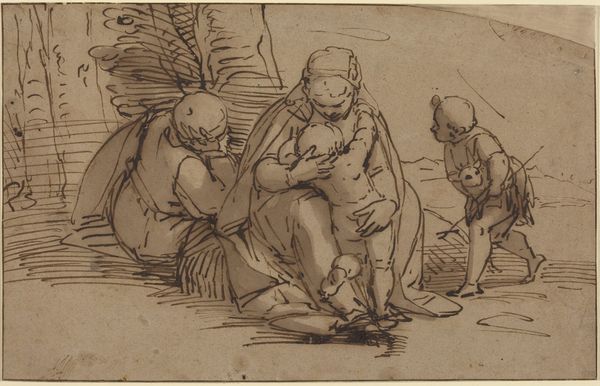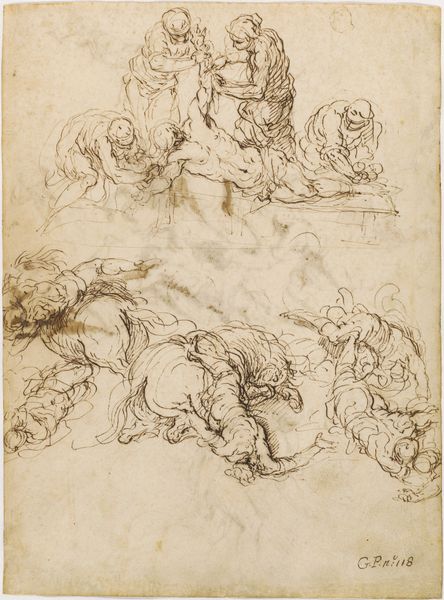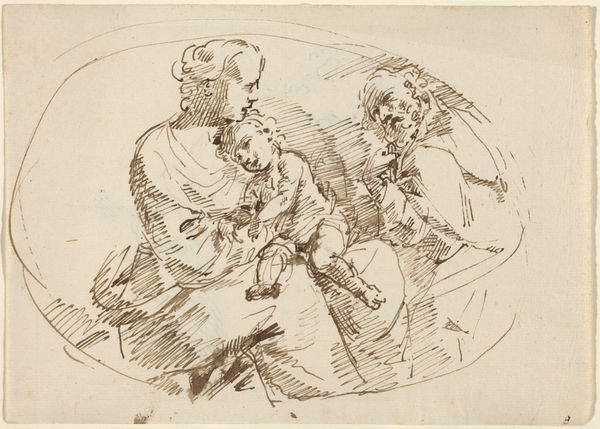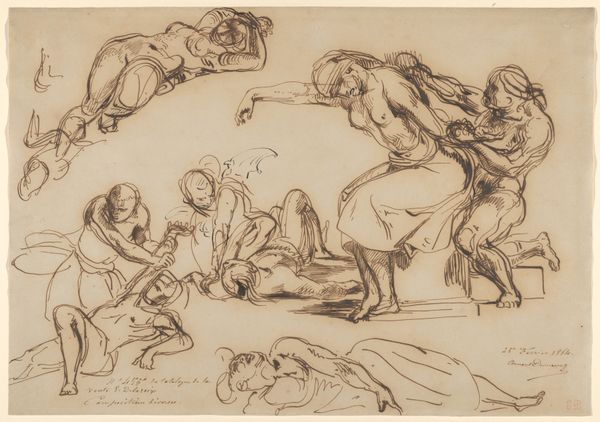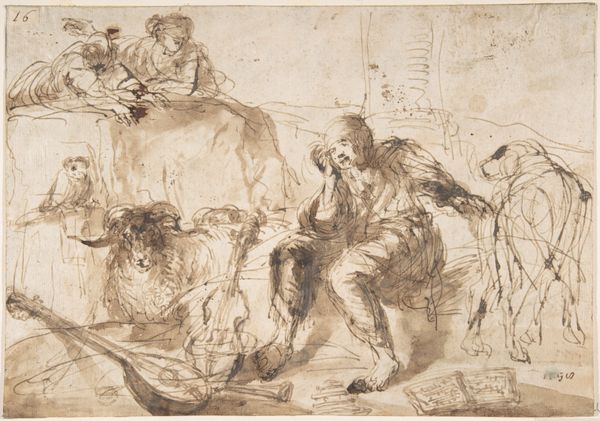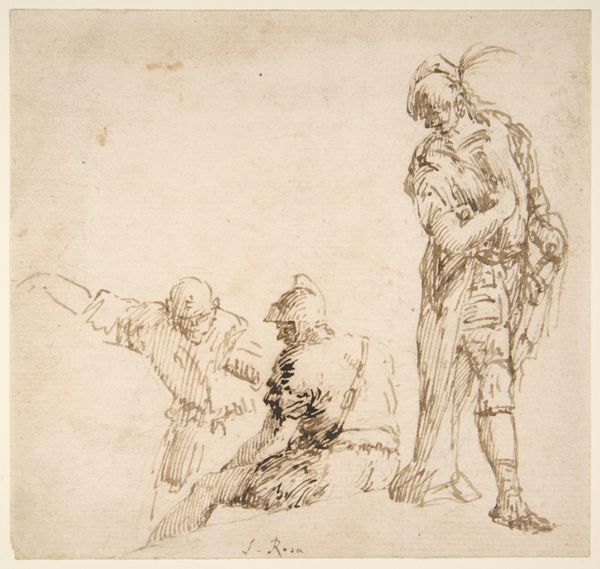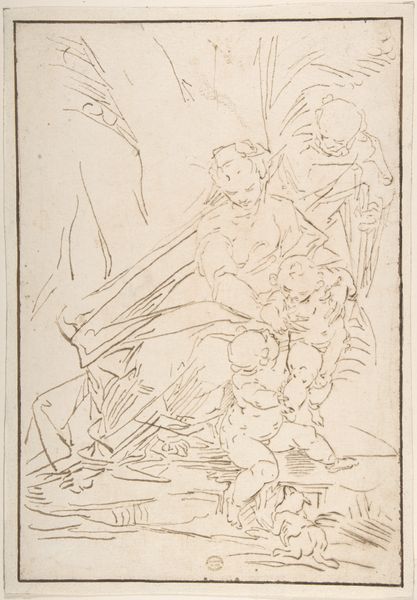
drawing, ink
#
drawing
#
baroque
#
figuration
#
ink
#
genre-painting
Copyright: Public Domain
Editor: Here we have "Two Butchers," an ink drawing by Rembrandt van Rijn, created between 1635 and 1639. I’m struck by the raw energy captured in the sketch-like quality of the lines. What compositional elements do you notice that draw your eye? Curator: Certainly. The dynamism arises, first, from the pronounced diagonals of the figures’ postures, which immediately destabilize any sense of static equilibrium. Notice how Rembrandt utilizes varying line weights to construct depth, creating visual layers through the thickness of the strokes defining musculature versus background shading. Also, how do you think the materiality of the ink itself affects the composition? Editor: That's a great point. I see how the ink seems to almost bleed into the page, which diffuses the edges and contributes to the dramatic Baroque feel, giving it a sense of movement even though it's a static image. But could the sketch-like form simply suggest it's unfinished? Curator: Ah, that’s an interesting observation, worthy of deeper reflection. Within Formalism, a sketch is valued as an insight into an artist’s process rather than dismissed as an incomplete work. The apparent immediacy showcased through rapid lines can be appreciated as revealing his first impressions. Do you observe anywhere else within the composition where he’s using the dynamism to capture your eye, moving from element to element? Editor: I do—the eye jumps from the standing butcher, to the hanging carcass, to the crouching figure with the axe. It's almost like following a narrative. Curator: Precisely. Consider then how Rembrandt guides our eyes through specific contrasts of weight and dark areas, allowing a glimpse of action that alludes to temporality and to the passage of time. The stark light is less about verisimilitude and more about emotional resonance with what we can intuit of this common labor. What have we gained in looking beyond the literal subject matter? Editor: Thinking about it now, by looking beyond the 'what' in the drawing, the simple image of two butchers becomes an exploration of energy and motion that is as valid and fascinating today as it must have been in the 17th century. Curator: Well said. Examining the formal elements certainly enriches our encounter with this seemingly modest work.
Comments
stadelmuseum about 2 years ago
⋮
The Städel Museum has in its holdings one of Rembrandt’s studies “after life” – this pen and ink drawing. The choice of motif, however, adheres to pictorial tradition: depictions of the slaughter are encountered rather frequently in the Dutch painting of the period, as genre scenes but sometimes also as a hidden allusion to the Passion of Christ. Here, Rembrandt evidently observed the butchers directly as they were going about their work. He drew rapidly, alternating between fine and bold strokes of the pen to characterize the toilsome labour by way of the poses, the suggestion of movement, and the expressive physiognomies. He spontaneously joined the two studies in a composition, and made a written note of an observation on the sheet as well.
Join the conversation
Join millions of artists and users on Artera today and experience the ultimate creative platform.
